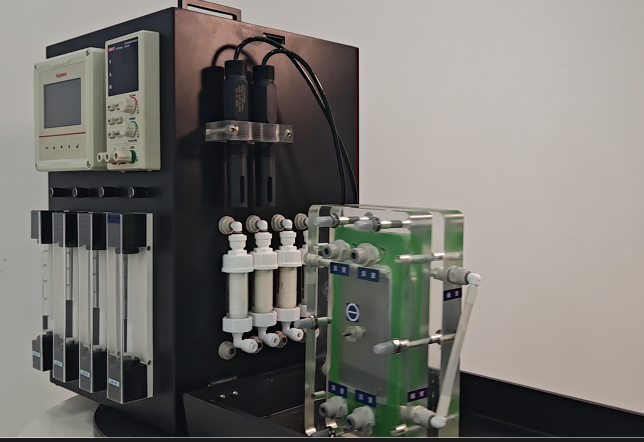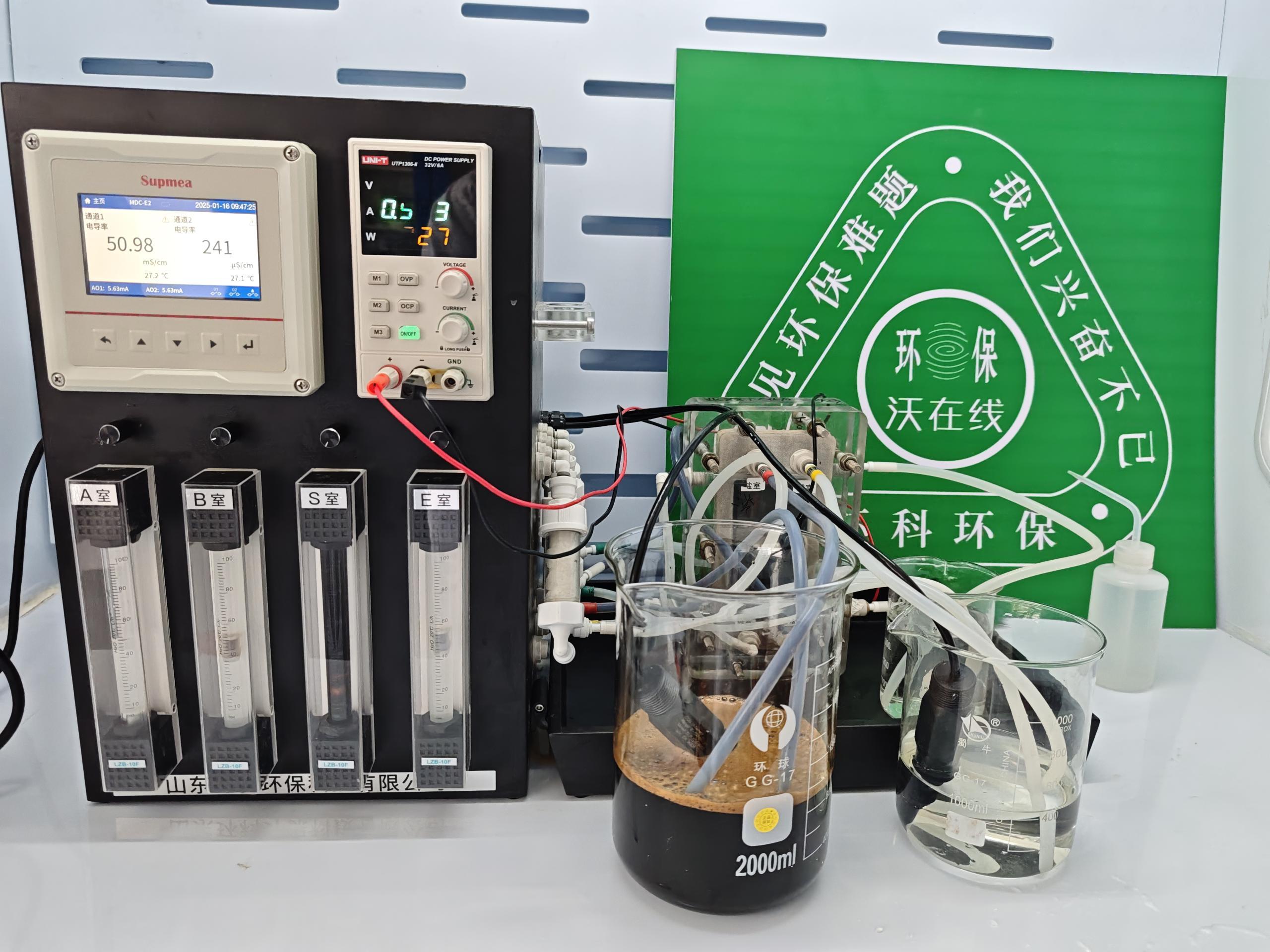11
2025
-
11
From "Salt Disturbance" to "Salt Treasure" : Electrodialysis makes glycine production both environmentally friendly and cost-effective
Author:
Glycine, as a key raw material in the pharmaceutical and food industries, the efficient separation of ammonium chloride during its production process is the core link that determines the purity of the product and the production cost. Traditional separation processes (such as evaporation crystallization and methanol extraction) generally have problems such as high energy consumption, high glycine loss rate (10%-15%), and large wastewater discharge, which seriously restrict the green upgrading of the industry. Electrodialysis technology, with its unique advantages of physical separation, low energy consumption and resource recycling, has become the core innovative path to solve this "salt dilemma" problem.
I. Technical Principle: Ion migration-driven separation
Electrodialysis technology takes the selective permeability of ion-exchange membranes as its core. Driven by an external direct current electric field, it achieves the directional separation of glycine and ammonium chloride. The specific mechanism is as follows:
• Ion migration: NH₄⁺ in the glycine feed solution migrates through the cation exchange membrane towards the negative electrode, while Cl⁻ migrates through the anion exchange membrane towards the positive electrode. Eventually, both are enriched in the concentrated water chamber to form a high-concentration ammonium chloride solution.
Glycine retention: Glycine molecules carry no charge and cannot pass through the ion-exchange membrane, remaining continuously in the fresh water chamber to achieve efficient separation from salt.
This technology has three core advantages: 1. High selectivity purification: The ion-exchange membrane has a retention rate of over 98% for NH₄⁺ and Cl⁻, with the glycine loss rate controlled within 5%, and the purification yield can reach over 95%. 2. Low energy consumption operation: No heating phase change is required. Ion migration is driven solely by an electric field, with energy consumption being only one-third of that of the evaporation crystallization method. The energy consumption for desalting a single ton of glycine is reduced to 80-120 KWH. 3. Wide adaptability operation: It can flexibly handle glycine feed solutions with concentrations ranging from 5% to 20% and different impurity contents. The membrane stack supports modular expansion and is suitable for industrial production scenarios ranging from laboratories to tens of thousands of tons.


Ii. System Process: An industrialized solution for full-process optimization
The industrial application of electrodialysis technology requires the construction of a full-process system of "pretreatment - desalination - post-treatment". Through precise matching of each link, the efficiency, purity and benefit can be improved in a coordinated manner: Pretreatment: Impurity interception and water quality optimization: The glycine feed solution (especially the product of biological fermentation) contains impurities such as bacteria, proteins, and pigments, which can easily cause membrane fouling and blockage. Therefore, multi-stage pretreatment is required to ensure the quality of the feed.
Ultrafiltration pretreatment: Ceramic or organic ultrafiltration membranes with a pore size of 0.1μm are used to remove over 99% of suspended solids and bacteria, reducing the turbidity of the feed liquid. • Nanofiltration retention: Select nanofiltration membranes with a molecular weight cut-off of 200-500Da to intercept large-molecule organic substances and prevent adsorption contamination on the membrane surface.
• Activated carbon adsorption: Further remove pigments and small-molecule organic impurities in the feed liquid to ensure that the feed turbidity is ≤0.3NTU and the COD is ≤50mg/L, thereby extending the membrane service life. Electrodialysis desalination: Precise parameter control enhances efficiency. For glycine feed solutions with an initial salt concentration of 12%-15%, efficient desalination is achieved through key parameter optimization
• Core parameter Settings: The electric field intensity is controlled at 100-250V, the current density is optimized to 20mA/cm², and the membrane stack adopts an alternating arrangement of "cation membrane: anion membrane = 1:1". The number of membrane pairs is configured according to the processing scale (conventionally 100-200 pairs).
• Flow and structural design: The material flow rate is stabilized at 5-8m³/h, ensuring full ion migration while avoiding concentration polarization. By adopting a "one-stage multi-stage" series structure, the ion migration path is prolonged, and the desalination rate is increased to over 90%.
• Real-time monitoring and regulation: By online monitoring of conductivity, pH value, and membrane pressure difference, the operating parameters are dynamically adjusted to ensure that the glycine purity in the fresh water chamber remains stable and meets the standards. Post-treatment: Resource recycling and product value-added. The concentrated water and fresh water after desalination are respectively treated through special processes to achieve maximum utilization of resources.
• Concentrated water recovery: Concentrated water with an ammonium chloride concentration of 20% is processed through multi-effect evaporation crystallization or MVR concentration to prepare industrial-grade ammonium chloride (purity ≥98%), which is sold as raw material for nitrogen fertilizers, thus achieving the recycling of salt resources.
Glycine refinement: A glycine solution with a concentration of around 15% in the fresh water chamber is concentrated to 30% through RO reverse osmosis or MVR. Then, through low-temperature crystallization (40-60℃), centrifugal separation, and vacuum drying, a pharmaceutical-grade glycine with a purity of ≥99.5% is prepared to meet the demands of the high-end market.
• Zero wastewater discharge: The mother liquor of crystallization is reused in the production process after advanced treatment, increasing the water resource utilization rate to over 85% and reducing wastewater discharge.
Iii. Future Trends: In-depth Upgrades in Intelligence and Greenness
With the upgrading of environmental protection requirements in the industry and technological iteration, electrodialysis technology is developing towards intelligence, greenness, and multi-field expansion: the intelligent control upgrade introduces Internet of Things and AI technologies to build a full-process intelligent control system
• Real-time monitoring: More than 10 key parameters such as conductivity, pH value, membrane pressure difference and energy consumption are collected in real time through sensors, and the data is transmitted to the cloud platform.
• Intelligent regulation: Based on AI algorithms to analyze the fluctuations in the composition of the feed liquid (such as ±5% changes in ammonium chloride concentration), it automatically optimizes parameters such as current density and flow rate to ensure that the desalination efficiency remains stable at over 90%, reducing manual intervention.
Predictive maintenance: By analyzing data to predict the trend of membrane fouling, cleaning procedures are triggered in advance to reduce equipment failure rates. The integration of green processes promotes the deep coupling of electrodialysis and green production technologies
• Integrated process construction: Combined with green synthesis technologies such as biological fermentation and enzyme catalysis, a closed loop of "green synthesis - electrodialysis purification - resource recycling" is formed, reducing carbon emissions from glycine production by 30% and increasing water resource utilization by 40%.
• Application of new membrane technology: Bipolar membrane electrodialysis can simultaneously achieve glycine purification and acid-base recovery, reducing the consumption of chemical reagents. Membrane distillation coupling technology can further concentrate glycine solution and achieve zero discharge of water resources.
Expansion of application fields
The core advantages of electrodialysis technology enable it to break through the glycine field and extend to more biochemical scenarios:
• Amino acid field: It can be used for desalination and purification of lysine, glutamic acid, methionine and other products, replacing the traditional ion exchange resin method, reducing the cost of resin regeneration and the pressure of wastewater treatment.
• Organic acid field: Suitable for the separation of salts of organic acids such as citric acid, lactic acid, and malic acid, enhancing product purity and production efficiency.
In the field of pharmaceutical intermediates: It is used for the refining and purification of antibiotics, vitamins and other products to meet the purity requirements of pharmaceutical grade.
Electrodialysis technology, through principle innovation, process optimization and bottleneck breakthroughs, has become the core solution to the "salt problem" in glycine production, promoting the transformation of the industry towards high efficiency, environmental protection and sustainability. In the future, with the continuous integration of intelligent and green technologies, it will play a key role in more biochemical fields and provide core technical support for global green manufacturing.
Related Products
From "Salt Disturbance" to "Salt Treasure" : Electrodialysis makes glycine production both environmentally friendly and cost-effective
2025-11-11
Electrodialysis technology: The green Solution to desalinating Soy sauce
2025-11-10
Electrodialysis technology: Salt concentration in wastewater from glufosinate-ammonium production
2025-11-07
Portable flexible cabin: The "Light Cavalry" for water treatment in Emergency and Remote scenarios
2025-10-31
Huanke Environmental Protection Technology
HOTLINE:
Address:Optoelectronic Industry Accelerator in Weifang Hi-Tech Zone, Shandong Province, China
Contact:Zhang Gong
WhatsApp:+8619953608211
Email:eco.eqpt@gmail.com


Consult

TikTok
Copyright © 2023 Shandong Huanke Environmental Protection Technology Co., Ltd
